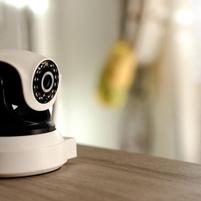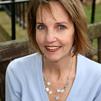A couple of years ago, I attended a talk at The Oxford Institute of Population Ageing on "Speculative Design." A colleague who worked in the area of digital health walked us through the sorts of products the pharmaceutical sector was developing to help older people manage their medical needs without having to visit a doctor.
As I sat through my colleague's presentation, I kept envisioning my own mother - then 86 - trying to grapple with the remotely activated medicine dispenser he was describing. It lit up in different colours to cue the patient when it was time for new meds.
My own mother grew up during the Depression. Electricity remains a rather novel concept for her, let alone anything digitised. "No way," I thought to myself at the time. "Not my mother."
Little did I know then that two years later, the very sort of "aging in place" technology my colleague was describing would enable my family to guarantee the safety of my mother in her home.
Aging in Place
Aging in place is defined by the Center for Disease Control and Prevention (CDC) as "the ability to live in one's own home and community safely, independently and comfortably, regardless of age, income or ability level." It encompasses everything from simple safety adaptations - like using handrails and eliminating area rugs - to the far more complex - like voice-enabled "smart thermostats" and personalised clocks that remind you to take out the rubbish or feed the cat.
Over the past decade, the rapid evolution of technology, together with the burgeoning "silver economy," have led to an explosion in demand for such products. According to the United States' Consumer Technology Association, the aging in place market is expected to grow to nearly $30 billion in the next few years.
Digital Cameras and the Elderly Parent
When we moved my mother into her independent living facility two and a half years ago, she was actively involved in the vast array of activities offered there: walking clubs...live theatre...a documentary film society.
Over the next two years, however, as her cognitive abilities declined, the range of supports needed to enable her to live independently have escalated. We started with a fairly commonplace auto-alert necklace with a personal help button she could push in the event of an emergency. Then we brought in a nurse to administer her evening meds - her memory was worse in the late afternoon - followed by a nurse to administer the morning meds. After a bad fall last year, she now has a care assistant with her at all times.
When I visited over the past year, I observed that the night-time carers weren't keeping an eye on my mother. They were sitting where they couldn't see her, sleeping on the job and/or leaving early before the shift was over to deal with personal matters. I was sympathetic - it's a tough job - especially if you also work a day shift. But after my mother slipped and fell in the bathroom one night a couple of months ago, my siblings and I decided that the situation was untenable.
So - after getting clearance from the retirement community where she lives - we installed a video camera. Instead of using it to view my mother, however, we use it to observe the carers. (There is a sign on the wall alerting them to the camera.) Because I live in London, I'm able to log on when I wake up in the morning and do "spot checks" in the middle of the night, New York time. If something looks amiss, I can speak to the carers through the camera and gently remind them to turn on a light, open the door, or sit at the kitchen table facing my mother's bedroom.
Guess what? It's working.
Nanny Cams and Covid-19
In the wake of the Corona Virus, having a "nanny cam" to ensure my mother's safety is more valuable than ever. Now, in addition to making sure that the night aides are awake and doing their jobs, I can also verify the use of gloves, masks and other protective gear to safeguard my mother's health.
When we first installed this system, it all felt vaguely 1984-ish. Now, it feels like a lifeline.
About the Author
Delia Lloyd is a Visiting Fellow at the Oxford Institute of Population Ageing. A seasoned writer and editor, she worked for a decade in radio, print and online journalism. Her reporting and commentary have been featured on outlets including The New York Times, The Washington Post, The Guardian and The BBC World Service.
Comments Welcome
We welcome your comments on this or any of the Institute's blog posts. Please feel free to email comments to be posted on your behalf to administrator@ageing.ox.ac.uk or use the Disqus facility linked below.
Opinions of the blogger is their own and not endorsed by the Institute
Comments Welcome: We welcome your comments on this or any of the Institute's blog posts. Please feel free to email comments to be posted on your behalf to administrator@ageing.ox.ac.uk or use the Disqus facility linked below.













